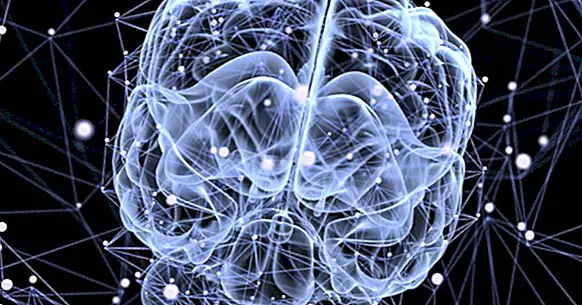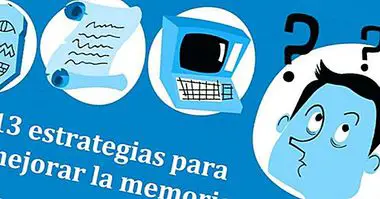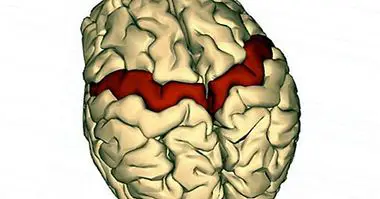Work memory (operative): components and functions
Working memory, also known as "operational" , is a cognitive system that retains short-term information and manipulates it, thus allowing the execution of complex psychological behaviors and processes such as decision-making or mathematical calculation.
The original theory that described working memory was the work of the psychologists Baddeley and Hitch. In this article we will analyze the components of the operational memory according to this model and the functions that correspond to each one of them.
- Related article: "Types of memory: how memory stores the human brain?"
Work memory and short-term memory
During the 50s and 60s of the last century different theories about memory emerged within the framework of the cognitivist paradigm. First we talked about the sensorial memory, which included the iconic or visual and the echoic or auditory, and later the distinction between short-term memory and long-term memory .
The concept of short-term memory has been progressively replaced by that of operational or work memory. This change is because, from the contributions of Alan Baddeley and Graham Hitch in the 70s, it is considered that this type of memory is not only a passive store of information but also operates on it.
According to Baddeley and Hitch, working memory is composed of a set of components that interact with each other. These systems work with "Items" of verbal information , visual or other types ; any item of information with meaning for the person is understood as an item.
- Maybe you're interested: "Cognitive psychology: definition, theories and main authors"
The multicomponent model of Baddeley and Hitch
The classic model of operational memory It was composed of three components: the central executive, which manages the use of cognitive and attentional resources, and two subordinate systems that process unimodal information, the phonological loop and the articulatory loop.
Subsequently, Baddeley added a fourth component, the episodic buffer.
1. Central executive
Baddeley and Hitch described the existence of an attentional control system that they called "central executive". The main function of this component is assign attentional resources to the tasks we are doing at a certain time, so that the rest of the mnemic systems are directed by the central executive.
This system also stores information but its capacity is limited; when the demand exceeds the resources of the central executive, this one uses the phonological loop and the visuospatial agenda , which Baddeley and Hitch called "slave subsystems".
2. Phonological loop or articulatory loop
The phonological loop is a system that retains verbal information in acoustic format temporarily . Depending on the model, the articulatory loop can passively maintain a maximum of 3 items for 2 seconds; if we perform a "subvocal review" operation repeating the information through internal speech, the capacity increases to 7 items.
If we focus on the passive side of the phonological loop, this component is close to the ecoic memory concept , described by George Sperling and Ulric Neisser as a brief mental representation of acoustic information.
3. Visospatial agenda
Baddeley and Hitch described a second slave subsystem that works with images: the visuospatial agenda. Its characteristics are similar to those of the phonological loop, differing basically in that it handles visual information instead of sound.
The visuospatial agenda has not been investigated as much as the articulatory link and its characteristics have not been fully confirmed. Research suggests that the brain could process visual information separately (perception of details, color, etc.) and the spatial one, including the location and movement of the stimuli.
4. Episodic buffer
The episodic buffer is the fourth and last component of the classic model of working memory, which was added by Baddeley in 1991 to its original formulation. From a theoretical point of view it is associated with the executive functions of the frontal lobe of the brain.
According to Baddeley, it is a temporary warehouse with restricted capacity, such as the articulatory loop and the visuospatial agenda. However, works with multimodal information instead of just using words or images. Its other fundamental characteristic is that it allows the exchange of information between long-term memory and operational memory.
- Related article: "Hypothalamus: definition, characteristics and functions"
Functions of the MT: control operations
As we have said, the main difference between the concept of short-term memory and that of working memory is that the first was understood as a passive store, while operational memory is also attributed to active functions related to the handling of available information .
Let's see what these control operations consist of.
1. Repetition
The repetition of the information stored in the operating memory allows it to be retained for a longer time, which, in turn, Allow time for other control operations to occur . When this occurs, the probability increases that short-term memory will be transferred to long-term memory.
2. Recoding, grouping or "chunking"
The recoding consists in the elaboration of complex information segments ("chunks", in English) from simpler items. In addition to working memory this operation it involves long-term memory , since the rules and strategies that guide recoding are stored in it.
3. Execution of complex cognitive tasks
Working memory deals with tasks such as listening and reading comprehension, problem solving, for example mathematics, and decision making . These processes are related to higher cognitive functions and depend on the interaction between the stimulation received and the information stored in long-term memory.
Is it related to intelligence?
It is considered that working memory has a very close relationship with intelligence, in the sense that a greater capacity in this type of memory is reflected in better IQ scores. However, little is known yet about how both constructs fit together.
- Related article: "The theories of human intelligence"



















